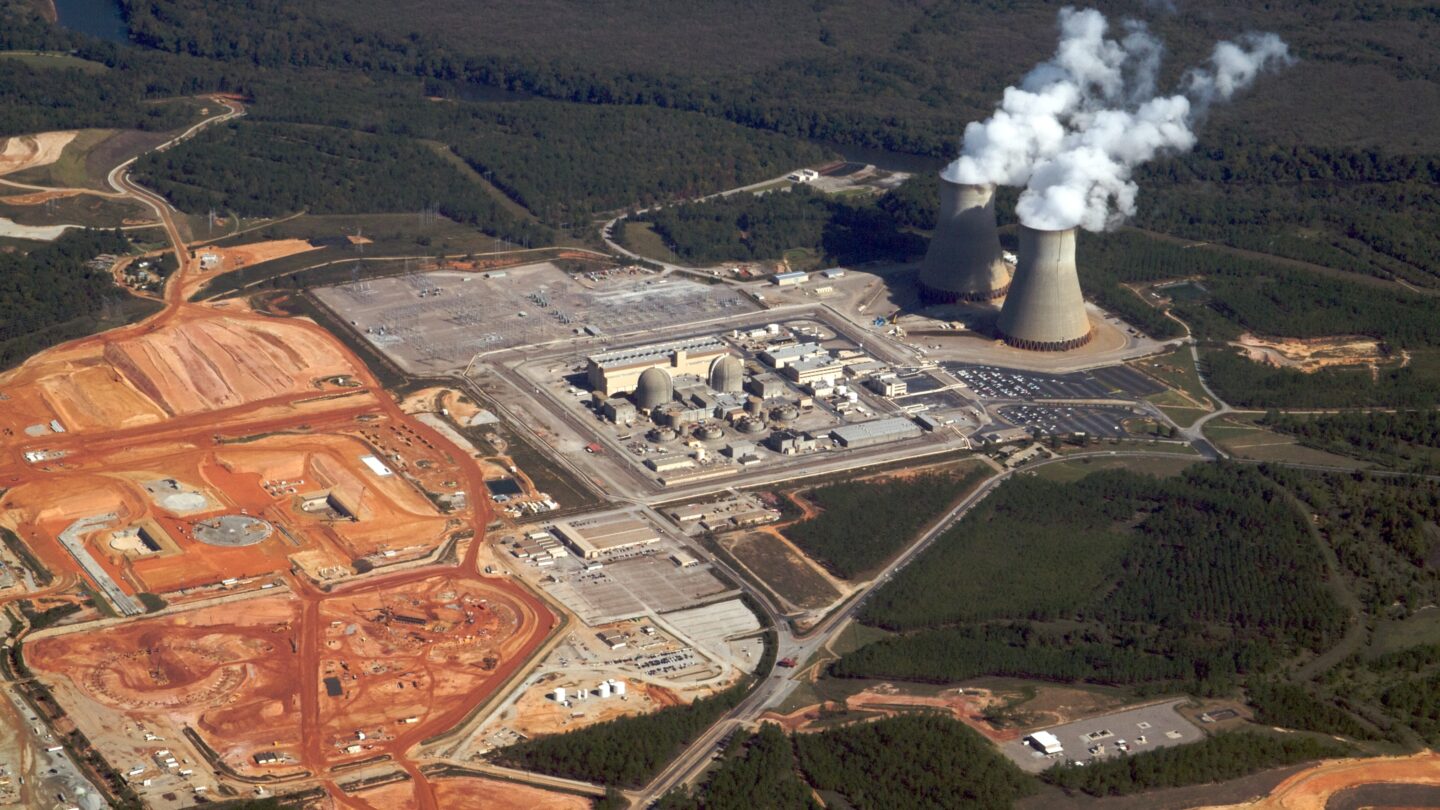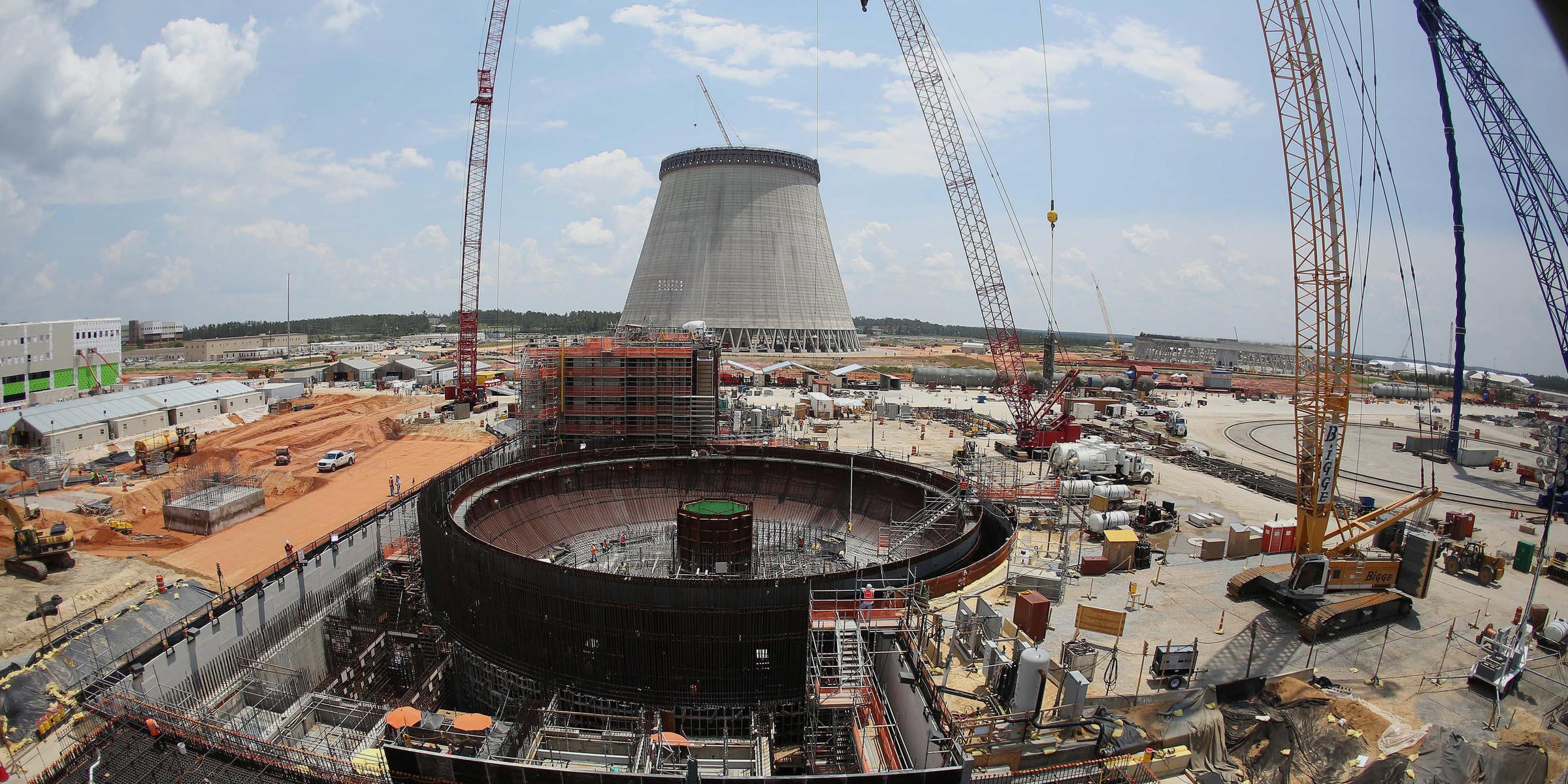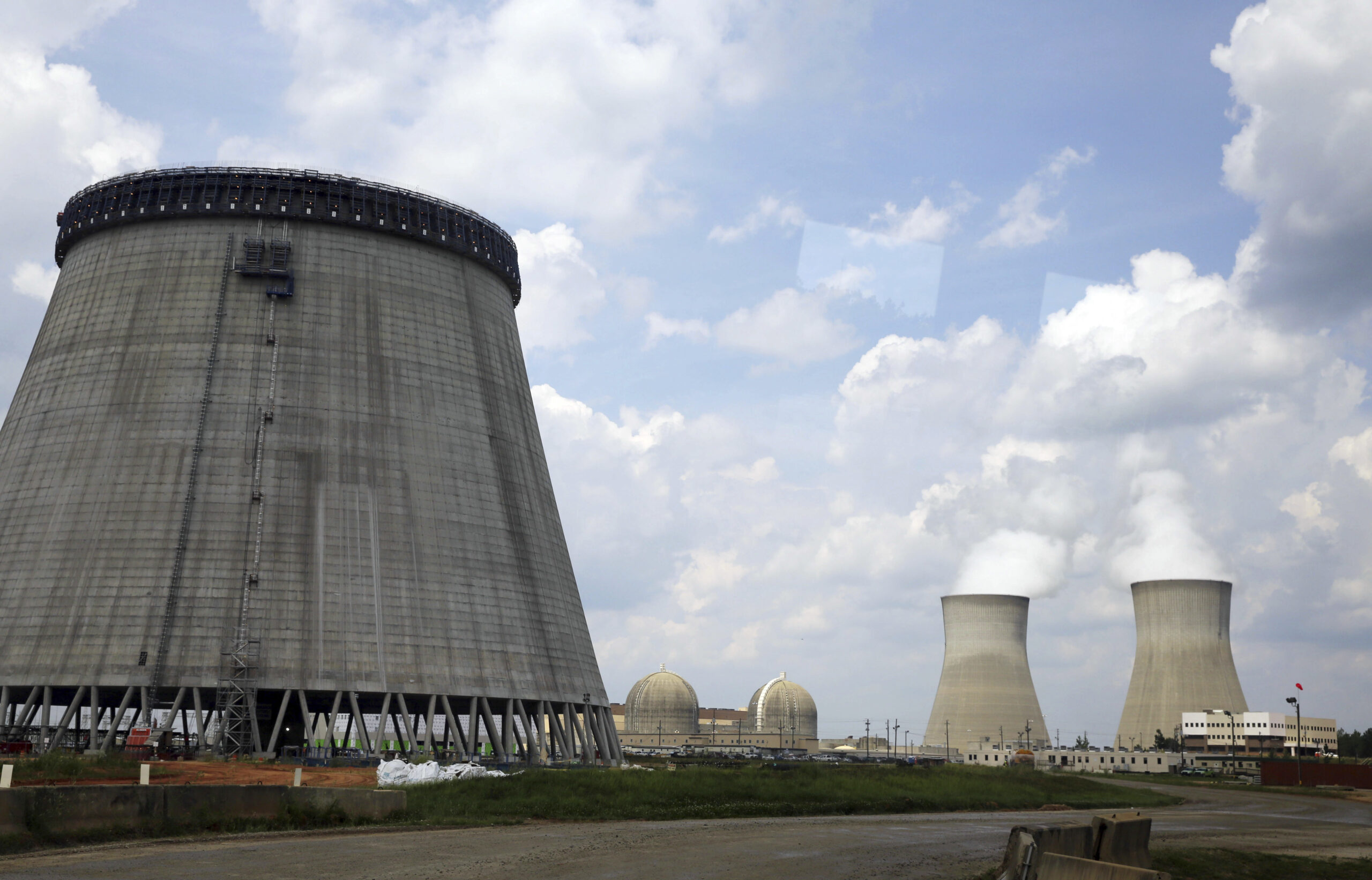A nuclear power plant being built in Georgia is now projected to cost its owners more than $30 billion.
A financial report from one of the owners on Friday clearly pushed the cost of Plant Vogtle near Augusta past that milestone, bringing its total cost to $30.34 billion
That amount doesn’t count the $3.68 billion that original contractor Westinghouse paid to the owners after going bankrupt, which would bring total spending to more than $34 billion.
Vogtle is the only nuclear plant under construction in the United States, and its costs could deter other utilities from building such plants, even though they generate electricity without releasing climate-changing carbon emissions.
The latest increase in the budget, by the Municipal Electric Authority of Georgia, wasn’t a surprise after lead owner Georgia Power Co. announced delays and $920 million in overruns on March 3. Georgia Power’s costs only cover the 45.7% of the plant it owns, meaning that the cooperatives and municipal utilities that own the majority of the two-reactor project later update their financial projections as well.
MEAG, which owns 22.7% of Vogtle and provides power to city-owned utilities, raised its total cost forecast, including capital spending and borrowing costs, to $7.8 billion from the previous level of $7.5 billion.
Oglethorpe Power Corp., which provides power to 38 cooperatives in Georgia, owns 30% of Vogtle. In March bumped up its cost projects by $250 million to $8.5 billion.
The city of Dalton, which owns 1.6%, estimated its cost at $240 million in 2021. It hasn’t released a public update.
The municipal utility in Jacksonville, Florida, as well as some other municipal utilities and cooperatives in Florida and Alabama are obligated to buy power from the plant.
When approved in 2012, the third and fourth reactors were estimated to cost $14 billion, with the first electricity being generated in 2016. Now the third reactor is set to begin operation in March 2023, and the fourth reactor is set to begin operation in December 2023.
Atlanta-based Southern Co., which owns Georgia Power, has been charging increasing shares of its cost overruns as shareholder losses, saying it’s unlikely that the Georgia Public Service Commission will approve adding amounts to the bills of Georgia Power’s 2.6 million customers. But Oglethorpe, MEAG and Dalton don’t have shareholders, meaning customers are fully exposed to overruns.
Georgia Power’s customers, as well as some Oglethorpe customers, are already paying the costs of Vogtle.
To protect themselves, the other owners signed an agreement with Georgia Power in 2018 specifying that if costs reach a certain point, the other owners can choose to freeze their costs at that level. In exchange for paying more of the costs, Georgia Power would own a larger share of the reactors.
Oglethorpe wants to freeze its costs at $8.1 billion, selling 2% of the reactor to Georgia Power in exchange for Georgia Power paying $400 million more in costs. MEAG also said Friday it wants to freeze its costs, but didn’t say how much it sought to shift to Georgia Power.
Southern has acknowledged it will have to pay at least $440 million more to cover what would have been other owners’ costs, and has said another $460 million is in dispute.
Georgia Power is disputing the cost threshold at which it must shoulder more of the burden and saying it shouldn’t have to pay the other owners’ share of extra costs stemming from COVID-19. The owners are in talks aimed at resolving their disagreements.
“Cost sharing is imminent, however, until the parties reach agreement, Oglethorpe will continue to pay its full share of the construction costs as billed by Georgia Power, but will do so under contractual protest,” Oglethorpe CEO Mike Smith said in March.
All the owners did vote to continue construction on Feb. 25. Also, the owners report that the U.S. Nuclear Regulatory Commission in March completed a follow-up inspection of wiring problems at the third reactor and signed off that problems it identified in November had been fixed, returning the reactor to its less intensive baseline inspection regime.









